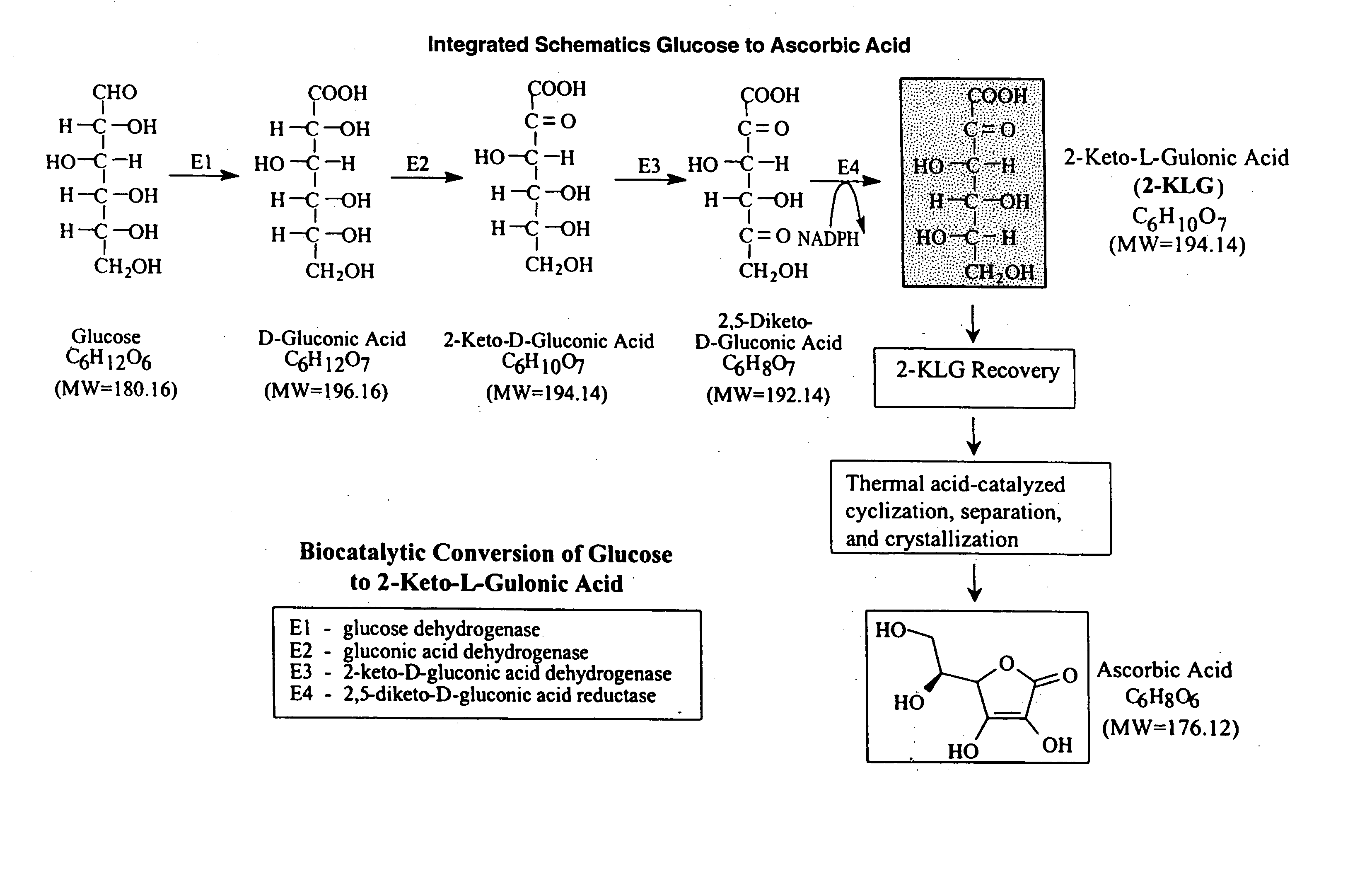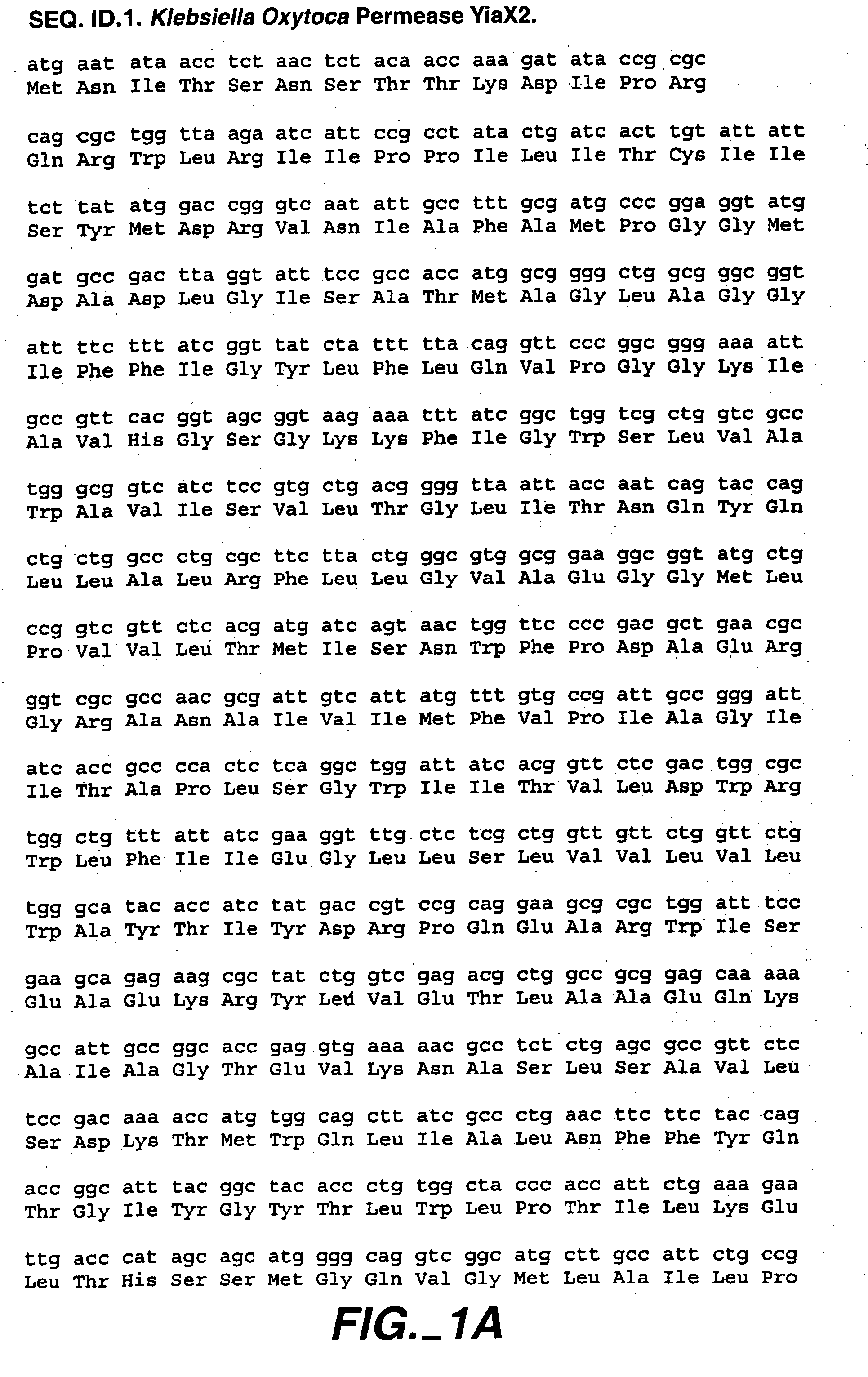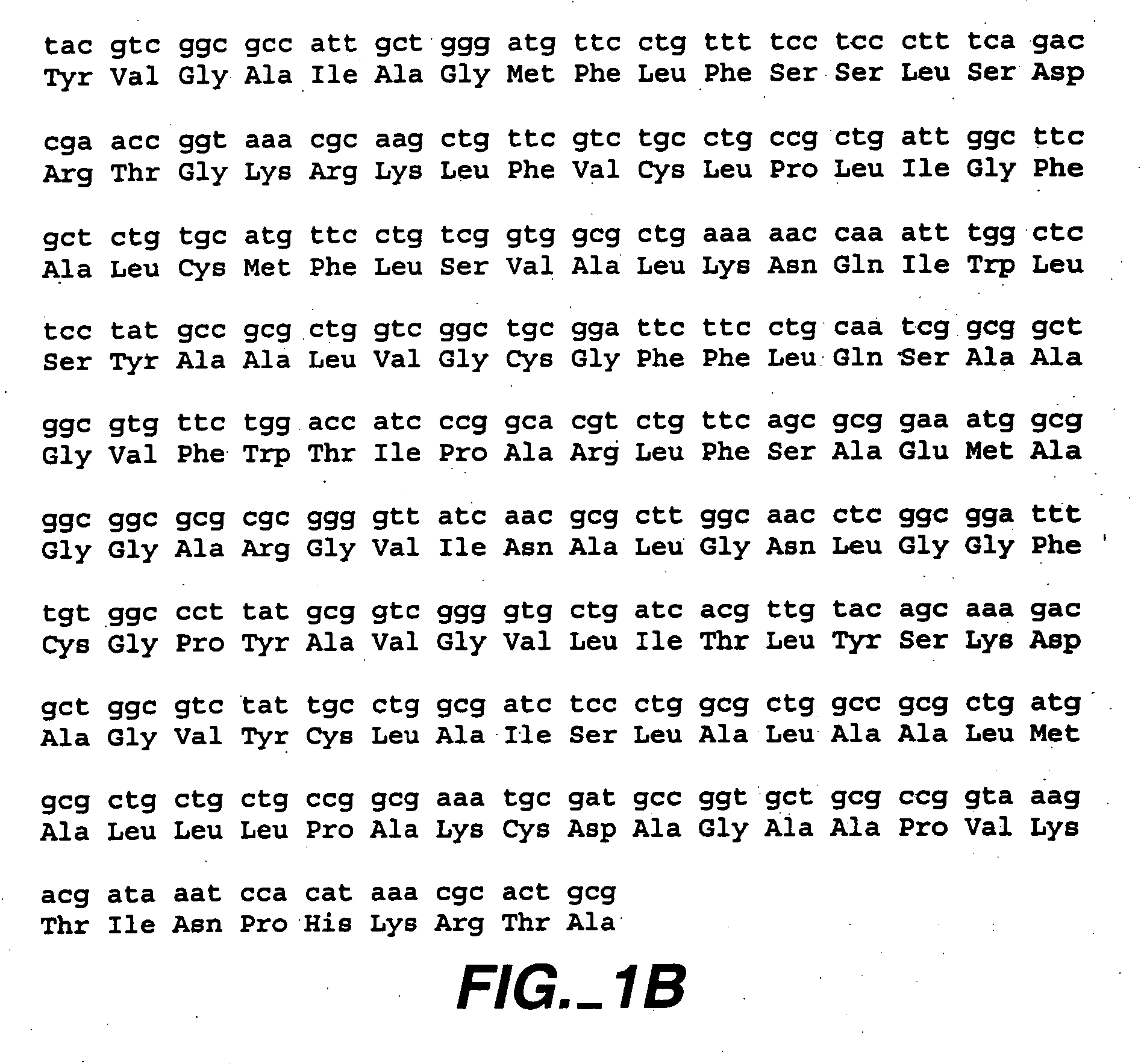Enhanced 2-Keto-L-Gulonic acid production
a technology of keto-l-gulonic acid and production, which is applied in the direction of fertilization, etc., can solve the problems that the capacity of the 2,5-dkg transport of a microorganism may become a limiting factor or bottleneck to the desired 2-klg production, and achieve the effects of enhancing the biosynthetic production of a host cell, and maintaining the integrity of the host cell
- Summary
- Abstract
- Description
- Claims
- Application Information
AI Technical Summary
Benefits of technology
Problems solved by technology
Method used
Image
Examples
example 1
Materials and Methods
[0128] a. Plasmid, bacterial strain and media: Plasmid pBCL1920, K. oxytoca, P. citrea 1392A. P. citrea 1392A strain is a P. citrea variant which is 39140. pD92 is described in stands for a vector which contains DKG reductase gene. U.S. Pat. No. 5,376,544. Murphy III medium contained fructose 0.5%, Phosphate 1.6%, MgSO4.7H2O 0.2%, Soytone 0.2%, citrate 0.01%, (NH4)2SO4 1%, Trace salts in ppm range such as Fe, Co, Mn, Zn and vitamins such as nicotinic acid, folate and B12; M9 medium, 0.9% Phosphate, 0.1% NaCl, 0.1% NH4Cl, MgSO4 0.0005%, CaCl2 0.025%; Fermentation medium Potassium. Phosphate 1, MgSO4 0.15%, glutamate 1.5%, fructose 2.5%, ammonium sulfate 0.1%, and vitamin blend having biotin, thiamin, pyridoxine, riboflavin, nicotinic acid, folic acid and B12 ,and trace metals cocktail solution having iron, Zn, and Mn ions in 10-100 ppm level; Transport assay medium 100 mM Potassium Phosphate pH 6.9; Antibiotics Spectinomycin 50 ug / ml and Tetracyclin 20 ug / ml, IP...
example ii
[0135] Example II provides the basis that transporters of substrate may be rate limiting in a whole-cell bioconversion
[0136] This example narrates the key steps of 2KLG formation from glucose which can be compartmentalized into four parts (FIG. 5) . Production of the key intermediate 2,5-DKG using three periplasmic enzymes in P. citrea at 14-15 g / l / hr rate (Sonoyama, et al, Appl. Environ. Microbiol., 1982, 43:1064-1069). The second part is the rate by which DKG is needed to be transported in the cell's cytoplasmic space. The third is the rate of conversion of DKG to 2KLG using DKG reductases (U.S. Pat. No.5,032,514). DKG to 2KLG conversion is not the rate limiting when DKG reductase is overexpressed. When in our current 2KLG production fermentations, inducible plasmids were used to both increase and decrease reductase specific activities relative to our typical fermentations, which presently use pD92, in which DKG reductase in under a constitutive trp promoter. The inducible plasmi...
example iii
[0138] Example III provides the proof that indeed the transport rate of substrate in to the cell for bioconversion can be the rate limiting step.
[0139] Cell pellets from three different times of the fermentation process, seed-flask stage, fructose feed stage and glucose feed stage were collected and processed as described in the. experimental. The DKG uptake assay using these cell-types gave 0.5 g / l / hr, 2.7 g / l / hr and 2.75 g / l / hr DKG uptake rate of bring in the DKG to get converted to KLG (FIG. 9). The rate of DKG import is same as KLG export. This result thus demonstrate that the rate of bioconversion of DKG to KLG is dependent upon the import rate of 2,5-DKG into the cell. Thus this invention will demonstrate that by increasing the DKG uptake transporters by overexpression will enhance the import rate of 2,5-DKG and thus will enhance the 2KLG production rate. Those expert in this art, can visualize that the key limiting factor in various biotransformations using whole cell conver...
PUM
 Login to View More
Login to View More Abstract
Description
Claims
Application Information
 Login to View More
Login to View More - R&D
- Intellectual Property
- Life Sciences
- Materials
- Tech Scout
- Unparalleled Data Quality
- Higher Quality Content
- 60% Fewer Hallucinations
Browse by: Latest US Patents, China's latest patents, Technical Efficacy Thesaurus, Application Domain, Technology Topic, Popular Technical Reports.
© 2025 PatSnap. All rights reserved.Legal|Privacy policy|Modern Slavery Act Transparency Statement|Sitemap|About US| Contact US: help@patsnap.com



